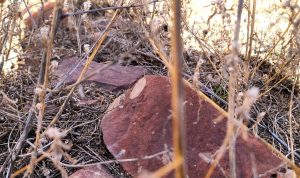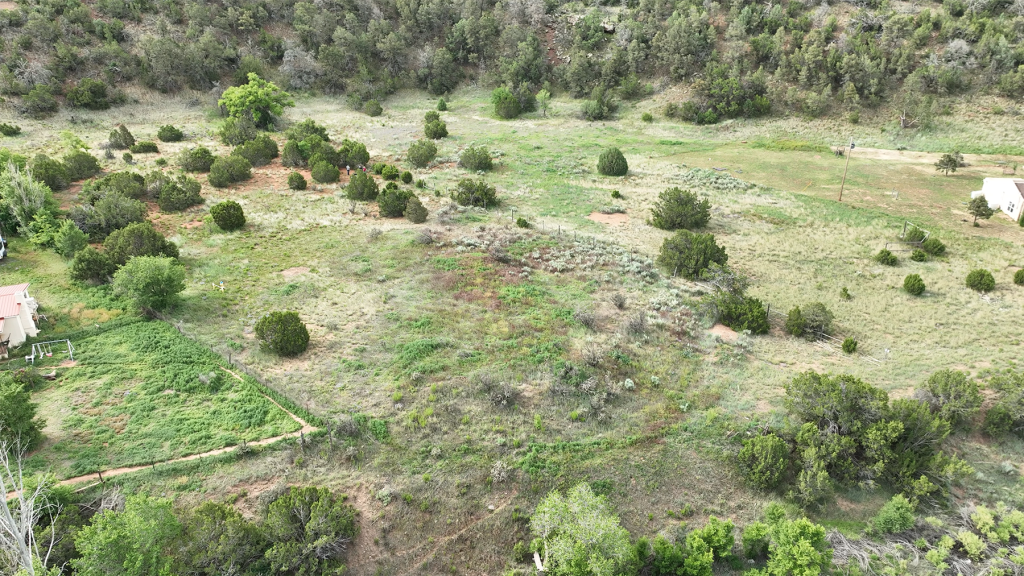Last fall, a landowner contacted The Archaeological Conservancy about a property he owned in the Village of Tijeras. He purchased some property for residential development, but later realized there was something of significance on one of the lots. This prompted a call to a local archaeologist who confirmed that there was an archaeological site on the property — identified in the New Mexico classification system as LA 580. The Conservancy closed on the property in May, increasing the number of the Conservancy’s preserves in the southwest region to 182.

Stone alignments visible in the vegetation are remnants of the foundations of 800 year-old structures. Photo credit: The Archaeological Conservancy
Only a few miles from Tijeras Pueblo, which would have been the central village for the smaller communities scattered throughout the canyon, Tijeras Canyon has been investigated by various educational institutions over the years but were denied permission by the previous landowners to access LA 580.
Tijeras Canyon was home to the ancestral Tiwa of southern New Mexico who eventually settled at Sandia and Isleta pueblos. Tree-ring samples collected from Tijeras Pueblo reveal that the village was occupied for about 125 years beginning around A.D. 1313.
The new preserve probably contains the remains of a small farming community that benefited from the seasonal water of Tijeras Arroyo, which is adjacent to this property. Stone alignments hidden beneath the vegetation at LA 580 suggest construction similar to structures at Tijeras Pueblo. These alignments may represent the foundation of a top story of room blocks that once had adobe walls. There are also similar sites in the canyon that contain deeply buried pithouses indicating an earlier occupation dating to as early as A.D. 900.




